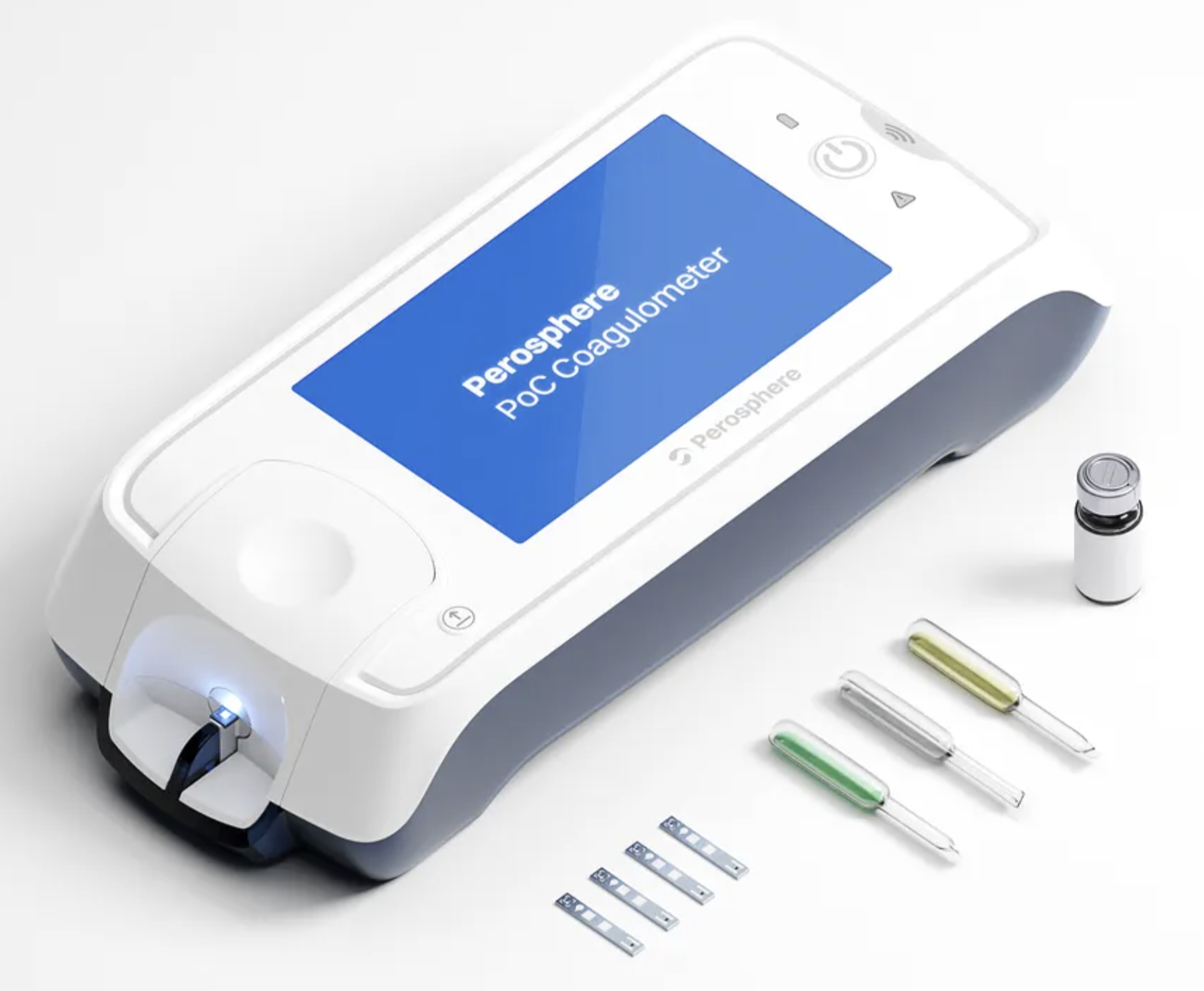Durability Testing of Reusable In-Vitro Diagnostic (IVD) Medical Devices
Durability Testing
Posted by: Jack Jennings
9 months ago
In-vitro diagnostic (IVD) medical devices play an essential role in healthcare by providing critical information for diagnosing and managing diseases. Ensuring the cleanliness and disinfection of these devices is vital to prevent contamination and ensure accurate test results. The current requirements for cleaning and disinfection of IVD medical devices are shaped by regulatory standards, best practices, and the unique challenges associated with these devices. Durability testing of in-vitro diagnostic (IVD) medical devices is a process that ensures their safety, effectiveness, and longevity. These tests ensure that IVD devices remain safe and effective throughout their intended lifespan, even after repeated cleaning and disinfection cycles. Click here to read our case study on durability testing of the ClotCheck™ Coagulometer.

We have compiled some key information to be considered when planning for durability testing of your IVD device.
Regulatory Standards and Guidelines
The regulatory framework for cleaning and disinfection of IVD devices includes guidelines from international and national organizations, such as the International Organization for Standardization (ISO), the U.S. Food and Drug Administration (FDA), and the European Union (EU). Key standards include:
- ISO 13485: This standard outlines the requirements for a quality management system for medical devices, including IVDs. It emphasizes the importance of a documented process for cleaning and disinfection to ensure device safety and effectiveness.
- ISO 14971: This standard focuses on risk management for medical devices, including IVDs. It requires manufacturers to identify and mitigate risks associated with contamination and infection.
- FDA Guidelines: The FDA provides guidance on the reprocessing of reusable medical devices, including IVDs. These guidelines emphasize the importance of validated cleaning and disinfection processes to prevent cross-contamination and ensure patient safety.
- European Union Medical Device Regulation (MDR): The MDR provides specific requirements for the cleaning, disinfection, and sterilization of medical devices, including IVDs, to ensure safety and performance.
The FDA guidelines for cleaning and disinfection of in-vitro diagnostic (IVD) medical devices are rooted in the broader regulatory framework that governs medical devices. These guidelines ensure that IVD devices, which include laboratory instruments, test kits, and reagents used to diagnose diseases, are safe, effective, and reliable throughout their lifecycle. The key elements of the FDA’s approach include:
- Good Manufacturing Practices (GMPs):
- The FDA requires that IVD devices be manufactured under strict GMPs, which include protocols for cleaning and disinfection. These practices are intended to minimize contamination and ensure that devices meet quality and safety standards throughout their lifecycle [1].
- Device Classification and Risk Assessment:
- IVD devices are classified into three categories based on their risk levels (Class I, II, and III). The classification affects the regulatory requirements, including those for cleaning and disinfection. For example, higher-risk devices (Class II and III) are subject to more stringent controls and requirements, including detailed cleaning and disinfection protocols [2].
- Validation of Cleaning and Disinfection Processes:
- The FDA mandates that manufacturers validate their cleaning and disinfection processes to ensure that they effectively remove contaminants and pathogens. This validation process includes testing for residuals that could interfere with device performance or pose risks to patients. The validation must demonstrate that the cleaning process is effective for all possible contaminants and is reproducible.
- Special Validation Considerations for Reusable Devices:
- For reusable IVD devices, the FDA requires more rigorous cleaning and disinfection protocols. These devices must undergo validation testing to confirm that they can withstand multiple cleaning and disinfection cycles without compromising performance or safety. The protocols must detail the maximum number of cycles the device can safely undergo and any changes to cleaning procedures over the device’s lifespan.
- Labeling and Instructions for Use:
- IVD devices must include detailed labeling and instructions for use, specifying the cleaning and disinfection procedures recommended by the manufacturer. These instructions must be based on validated processes and should include information on compatible cleaning agents and methods. The labeling also guides healthcare professionals on proper handling and reprocessing of the devices to maintain their safety and efficacy.
- Post-Market Surveillance and Reporting:
- The FDA requires ongoing monitoring of IVD devices in the market, including reporting any adverse events related to the cleaning and disinfection processes. This surveillance helps identify potential issues that may arise during the device’s use, ensuring that any problems are addressed promptly to maintain patient safety. [3]
The FDA’s guidelines for the cleaning and disinfection of IVD devices are designed to ensure these devices are safe and effective for use in clinical settings. Compliance with these guidelines is crucial for manufacturers and healthcare providers to protect patient safety and maintain the integrity of diagnostic testing.
Cleaning and Disinfection Process
The cleaning and disinfection process for IVD devices involves several key steps, each designed to ensure the removal of contaminants and pathogens:
- Pre-cleaning: This initial step involves the removal of gross contaminants such as blood, body fluids, and other biological materials. Pre-cleaning can include rinsing with water or using a detergent solution.
- Cleaning: The cleaning step aims to remove any remaining debris or organic material. This can be done using detergents, enzymatic cleaners, or mechanical processes such as brushing or ultrasonic cleaning. The choice of cleaning agents depends on the material compatibility of the IVD device.
- Disinfection: Disinfection involves the use of chemical agents to reduce the number of viable microorganisms to a safe level. The choice of disinfectant depends on the type of IVD device and its intended use. Common disinfectants include alcohols, quaternary ammonium compounds, hydrogen peroxide, and others.
- Rinsing and Drying: After disinfection, the devices should be thoroughly rinsed to remove any residual disinfectants, which could interfere with diagnostic tests or damage the device. Proper drying is also essential to prevent microbial growth and ensure device functionality.
Considerations for IVD Devices
IVD devices can present unique challenges for cleaning and disinfection due to their diverse nature and the materials used in their construction. Some key considerations include:
- Material Compatibility: IVD devices are made from various materials, including plastics, metals, and glass. The cleaning and disinfection agents used must be compatible with these materials to avoid damage or degradation.
- Design Complexity: IVD devices can have intricate designs with small crevices and channels that can harbor contaminants. Special attention must be given to ensure thorough cleaning and disinfection of these areas.
- Reusable vs. Single-Use: Reusable IVD devices require robust cleaning and disinfection protocols to prevent cross-contamination between patients. Single-use devices, while eliminating this risk, must still be properly disposed of to prevent environmental contamination.
Durability testing of in-vitro diagnostic (IVD) medical devices is a process that ensures the safety, effectiveness, and longevity of reusable devices. This testing aims to validate the number of times an IVD device can be reused after repeated cycles of cleaning and disinfection without compromising its performance or safety. Given the high stakes in medical diagnostics, durability testing is guided by stringent regulatory standards and best practices, ensuring that the devices remain reliable and safe throughout their intended lifespan.
Durability Testing Process
The durability testing of IVD devices involves several key steps designed to simulate the stresses the device will encounter during its lifecycle. The primary focus is on assessing the impact of repeated cleaning and disinfection on the device’s materials, functionality, and performance.
- Material Testing: This involves evaluating the materials used in the construction of the IVD device to ensure they can withstand repeated exposure to cleaning agents, disinfectants, and mechanical wear. Testing includes assessing chemical resistance, mechanical durability, and changes in physical properties.
- Functional Testing: Functional tests are conducted to ensure that the device continues to perform as intended after multiple cleaning and disinfection cycles. This includes checking for changes in sensitivity, accuracy, and reliability of diagnostic outputs.
- Visual Inspection: Regular visual inspections are carried out to identify signs of wear and tear, such as cracks, discoloration, or other forms of material degradation. These inspections help determine whether the device remains fit for use.
- Simulated Use Testing: Devices are subjected to cycles of cleaning and disinfection that mimic real-world conditions. This may include using specific detergents, disinfectants, and methods specified for the device, ensuring the test conditions match those expected in clinical settings.
- End-of-Life Testing: This testing aims to determine the point at which a device can no longer be safely or effectively used. It involves pushing the device beyond the recommended number of reuse cycles to identify failure points.
Challenges in Durability Testing
Durability testing of IVD devices presents several challenges:
- Diverse Device Types: IVD devices vary widely in their design, materials, and intended use, making it challenging to develop standardized testing protocols that are applicable across all device types.
- Material Compatibility: The materials used in IVD devices must be compatible with a wide range of cleaning agents and disinfectants. Some materials may degrade more quickly than others, complicating the validation of reuse cycles.
- Complex Designs: The intricate design of some IVD devices, including small components and complex geometries, can make it difficult to thoroughly clean and disinfect, necessitating specialized testing protocols.
- Evolving Standards: As new cleaning agents and disinfectants are developed, standards and guidelines for durability testing must evolve to ensure continued compliance and safety.
In summary, durability testing of reusable IVD’s is essential for validating the number of times these devices can be safely reused. The testing process, governed by international standards and regulatory guidelines, includes material testing, functional testing, visual inspection, simulated use testing, and end-of-life testing. These tests ensure that IVD devices remain safe and effective throughout their intended lifespan, even after repeated cleaning and disinfection cycles.
[1] J Hackett, S Gutman. “Introduction to the Food and Drug Administration (FDA) regulatory process.” Journal of proteome research 4.4 (2005): 1110-1113.
[2] S Gutman, K Richter, S Alpert. “Update on FDA regulation of in vitro diagnostic devices.” JAMA 1998 Jul 8;280(2):190-2. doi: 10.1001/jama.280.2.190.
[3] M Favero. “Strategies for disinfection and sterilization of endoscopes: the gap between basic principles and actual practice.” Infect Control Hosp Epidemiol 1991 May;12(5):279-81. doi: 10.1086/646339.
Ready to Verify the Life Cycle of Your Reusable Medical Device?
Utilizing our Clinical Reprocessing Cycles (CRC) testing provides a technical, non biased, certified validation so that you can be confident your materials and products are able to withstand the rigors of reprocessing.
